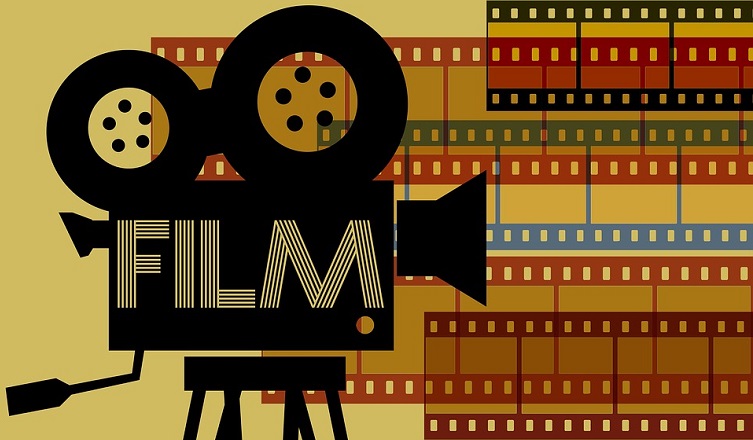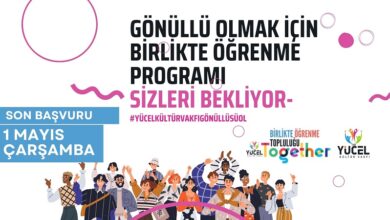Telling More With Less: The History of the Short Film and the Top 10 Best Short Films Ever Made

According to The Academy of Motion Picture Arts and Sciences, a short film is “an original motion picture that has a running time of 40 minutes or less, including all credits”. By emphasizing the duration, this definition kind of narrows down the meaning of a “short film” . If we had asked what a short film is, maybe 8 out of 10 people would just say that “it is a kind of film that is not long enough to be named as a feature film”. So in genereal, we tend to underestimate the short films because of these definitions and also because of the fact that these films are not promoted enough. The idea of watching a movie is usually perceived as going to the cinema and watching a one-and-half-an-hour movie while eating popcorn which means we watch movies for mostly entertainment. This is a feature that is ignored but also important as it is one of the features that makes the difference between a feature film and short film. When it comes to short films, we can’t even go to a cinema to watch it as they are only screened at local, national or international film festivals and are just available on the internet. Since they generally last less than 40 minutes, we don’t even have a chance to eat popcorn. I mean, you can’t just devour a bowl of popcorn in 15 minutes, right? (p.s. I know some of us can do that, including me).Also, since the content of short films are generally thought-provoking and intense, you don’t want to pay attention to anything other than the film, even if it’s popcorn.
Short films are generally shot with low budget or no budget at all but do you think this is the only reason why people prefer to shoot short films instead of feature films? Instead of focusing on the special visual effects that would blow the audience’s mind and take them to a different world like most of the feature films, short films generally focus on raising awareness of the social issues that we generally ignore or don’t take action. In this sense, short films are literally golden as they manage to tell us about the social, political, psychological issues in a highly efficient way within a very limited time. So, in my opinion, short film is actually “a piece of art which tells more with less”. These films truly affect us; sometimes they stab us through the heart, change our view of life, lead us to think and criticize more but what about the people who create these masterpieces? Can you think how hard it would be to make them even though they are short ? To look at the issue from the filmmakers’ perspective, let’s read what Martin Scorsese told about the 15-minute-film “The Audition” ;
“A short film is even tougher in a way because it has to be a film. It has to be not something that is a prologue to a bigger work, it has to be contained in of itself, we all pulled together and we came up with these ideas …and we shot five days straight. We also tried to make it a heightened …, not biographical but reality-based with humor about ourselves.”
I think Scorsese’s words are self-explanatory enough and tells us about the difficulties of the production part. Talking about the production, let’s look at the history of the short films briefly.
At the beginning of this industry,all films were short because of the lack of technology and facilities. In 1893, a device called Kinetoscope, invented by Thomas Edison, introduced the first films to the public. Considering the era that it was invented, we can say that it was way ahead of its time. However, it had a slight deficiency: it only enabled one viewer to watch the film at a time. On April 14, 1894, a Kinetoscope parlor (the first commercial motion picture house) was opened by the Holland Bros. in New York City. In this parlor, there was 10 machines situated in parallel rows and each row was made up of 5 machines. A viewer can watch all the movies in either row for 25 cents and both of the rows for 50 cents. In this first commercial programme, the 10 movies that are shown to the public were; Barber Shop, Bertoldi (mouth support) (Ena Bertoldi, a British vaudeville contortionist), Bertoldi (table contortion), Blacksmiths, Roosters (some manner of cock fight), Highland Dance, Horse Shoeing, Sandow (Eugen Sandow, a German strongman managed by Florenz Ziegfeld), Trapeze, and Wrestling. Lumière Brothers developed the first commercially succesful movie projection system which enabled more than one person to watch a film at a time which means it was like the first cinema. One of the best-known movies that is shown in this system is Arrival of a Train at La Ciotat Station (L’Arrivée d’un train en gare de La Ciotat). It was only 50 seconds, even less than a minute but it was enough to scare the audience. Reportedly, when the audience saw a life-size train coming towards them in this film, they got so frightened that they screamed and ran to the back of the room. These films were all one-shot and really short. In the early 1900s, thanks to the improvements in technology, filmmakers were able to produce longer and multi-shot films. Georges Méliès’s La Voyage Dans La Lune (A Trip to the Moon-1902) is one of the best-known examples of these films. It tells a story of a group of astronomers who travel to the Moon in a capsule, explore the Moon, escape from the Selenites who are the inhabitants of the Moon and return to Earth with a Selenite whom they captured.It lasts 13 minutes and was silent like the other films of the era. The story of the film was inspired by the 2 novels of Jules Verne; From the Earth to the Moon and Around the Moon. From 1910s, the comedy short films, especially the ones starrring Charlie Chaplin started to get a lot of attention. Some of these films were The Tramp (1915), The Bank (1915), The Pawnshop (1916), Shoulder Arms (1918). Like Charlie Chaplin, Stan Laurel and Oliver Hardy were also popular comedy actors. Also in 1910s, filmmakers started to work on producing longer, multi-reel films and the first feature film The Birth of A Nation was produced by D.W. Griffith. These longer films started to get more attention because of the fact that with their legth and complex narrative, they resembled more to the opera and theatre which were the most respectable entertainments of the era. A lot of cinemas were built purposely in order to profit from these feature films as people prefered to watch them. Since that day, short films haven’t been completely faded away but compared to feature films, we can say that they are more underestimated.
Don’t know which one to start watching first? We’ve made a list of the top must-see short films of all times for you!
1- The Black Hole (2008)
Despite the fact that it’s just 3 minutes long, The Black Hole made by Phil and Olly is one of those short films that make you ask a pile of questions from the beginning to the end. It is basically about the greed of a sleepy, unhappy officer who works late at night in the office. The moment he understands how the black hole works, he instantly tries to steal chocolates but apparently this is not enough for him because it is just a momentary pleasure, he then tries to steal what he actually needs in the long-run, which is money, so that he won’t be coming to work every day anymore as it is obvious that he is not happy at the job and working till late. At the end, he gets locked in the safe which actually shows us his greed led him to his downfall.
2- Room 8 (2013)
Directed by James W. Griffiths, Room 8 is a short film that won the BAFTA (British Academy of Film and Television Arts) award for Best Short Film in 2014. The story takes place in a Russian prison where a prisoner is brought to his cell. He meets a man in this cell who is probably an another prisoner. Then he sees a red box owned by that man and despite the warnings of the man, the prisoner opens the box and the prisoner is overwhelmed. He uses the box to get out of the box he is in but at the end, he ends up with getting stuck in even a smaller box. There isn’t a fixed, specific interpretation of this story as it is symbolic so make sure you watch and think about it before reading the other interpretations.
3-El Empleo / The Employment(2008)
Written by Patricio Plaza and directed by Santiago Grasso, El Empleo won 102 awards. The story revolves around the daily routine of an employee. The objects he uses every day are depicted as humans which shows us how people use each other. The more important idea that lies in the story is that as humans, we are stuck in this unfair system but we accept being used as objects, we don’t fight back. Throughout the whole film, there is no voice except from the sounds of walking, the opening of doors, the alarm clock in the morning, the sound of the razor when he’s shaving, basically all the voices are the same voices that the character hears every day. This also shows us the monotonous, dull lives of the working people. However, Grasso and Plaza also shows us that there is still hope, to found out what it is, make sure you watch the part that comes after the generics at the end.
4-Toyland / Spıelzeugland (2007)
Filmed by director and producer Jochen Alexander Freydank, Toyland won the 2009 Academy Award for Best Live Action Show film. The story takes place in 1942 Germany where the Jewish people are taken to concentration camps. When the German child Heinrich asks his mother where his best friend David, a Jewish boy is going to, Heinrich’s mother tells him that David and his family have been sent to Toyland. Hearing this, Heinrich wants to go with David, picks up his suitcase and teddy bear and runs away. The rest of the film is really touching in the sense that it shows us the innocence of the children, the effects and consequences of big and small lies in that era.
5-Insıde (2002)
Have you ever thought how would it be to live with a number of persons inside your head? People with multiple personality disorder struggle with it every day. Daniel is one of these people who have this mental disorder and we witness how he deals with her alter personalities in the film. By making this short film, Trevor Sands gives us an opportunity to see inside a person’s head who has this disorder.
6- Skhıeın (2008)
Made by Jérémy Clapin, Skhizein tells a story of a man who is struck by a meteorite and as a consequence, he gets 91 centimeters away from himself, everything he does is 91 centimeters away from him. His condition gets worse as he gets struck by the meteorite again. The way he talks about the psychiatrist about this and the way the psychiatrist listens to his patient tells us that the story is actually symbolic. Skhizein is a Greek word meaning “to split” or “to cleave” and it comes from the same root with schizophrenia. When the psychiatrist tells “asteroid”, the man corrects him by saying that it was a “meteorite”, not “asteroid”. This shows us that instead of trying to understand him and pay attention to what he really tells, the doctor just listens to him to diagnose. The movie tells us about the isolation and the loneliness that schizoprenia brings with itself.
7-Logorama (2009)
Directed by H5/François Alaux, Logorama presents us a different watching experience since it is highly symbolical and entirely made up of 2,500 logos and mascots. It won the Prix Kodak at the 2009 Cannes Film Festival and the Academy Award for Best Animated Short Film at the 82nd Academy Awards. The story takes place in a city where everything from cars to traffic lights are made up of logos and mascots, including people. The story revolves around two cops depicted as Michelin mascots chasing a criminal who is Ronald McDonald. The animated short film is basically a criticism of the mass consumption.
8-Le Ballon Rouge / The Red Balloon (1956)
https://www.youtube.com/watch?v=K2dor2_tCI0
Le Ballon Rouge is the only short film that won the Academy Award for Best Original Screenplay. Other than this, the film has numerous awards, including an Oscar for Lamorisse for writing the Best Original Screenplay in 1956 and the Palme d’Or for short films at the 1956 Cannes Film Festival. The story revolves around a boy who finds a red balloon and takes it anywhere he goes. He makes a bond with the balloon and literally become friends with it. They even learn to communicate with each other. In the end, even after the red balloon bursts, we see that its soul goes into every balloon in the city and they all go back to the boy. When we look at the interpretations, the majority of the people think that the balloon symbolizes Christ and the way its soul ascends and comes back to the boy is a depiction of resurrection. However, the ball might be just a symbol for the power of a child’s innocence, of friendship and love.
9-La Jetée (1962)
https://www.youtube.com/watch?v=aLfXCkFQtXw
Directed by Chris Marker, La Jetée is an unconventional movie in the sense that it is entirely made up of still images and it doesn’t include any dialogues. Watching it is a different kind of experience where we listen to the narrator while looking at the still images and trying to understand the story. The story takes place in a post-apocalyptic Paris where one of the prisoners is taken by the German scientists to used in an experiment about time travel. First, the experimenters send him to his past where he saw a woman at the Orly Airport shortly before seeing a man die there. Then he dreams of the pre-war period where he is in a relationship with the woman he saw at the airport. Next, experimenters send him to the future where the people from the future offer him to escape from his own time for good but instead of accepting this, he wants to go back to the past where he is with that woman. At the end, he goes back to the time when he saw the woman at the airport and realizes that the man whom he sees his death is actually himself.
10- Vıncent (1982)
Written and directed by Tim Burton, Vincent is Disney’s second horror film.The story tells us about a boy named Vincent who idolizes the famous actor Vincent Price. Not only the child Vincent but also Tim Burton idolizes Vincent Price so it’s not a consequence that the narrator in the film is also Vincent Price. The little Vincent is a child that has different interests compared to the children at his age. He does some experiments on his dog to create a Zombie dog, he imagines himself as Vincent Price and as a man who lost his wife and also he reads Edgar Allan Poe. He is stuck in the reality and his delusions, the films ends with him falling to the floor, quoting “The Raven” by Edgar Allan Poe.
Dilan Bayındır
Project Management School Blog Editor







